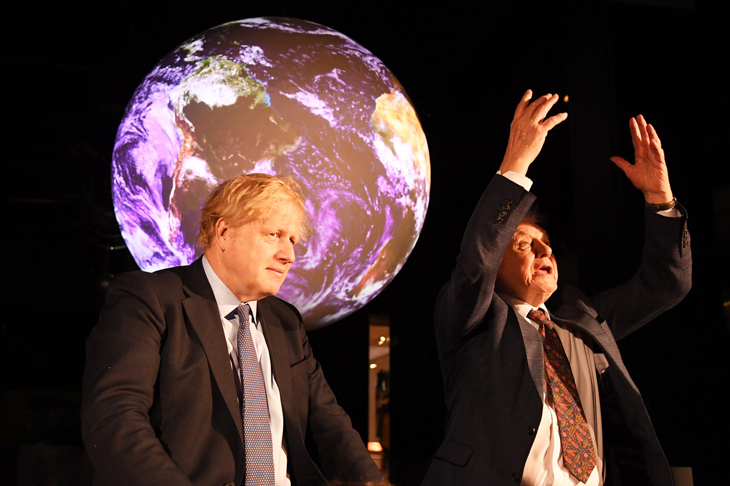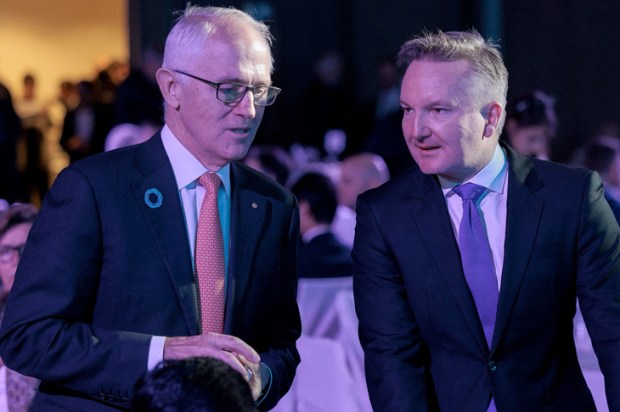It’s an oldie but a goody: What’s the purpose of economic modelling? To make astrology look good. Of course, the same can be said of epidemiological and climate modelling. They all fit the same mould of assumption-driven, garbage in, garbage out.
In very many cases, the tail clearly wags the dog. The required conclusion is determined for political and/or commercial reasons and the model is manipulated to ensure this result. The hope is that the rhetorical power of the modelling – read big impressive figures heading in the ‘right’ direction – can hold long enough to influence the target audience before the hard heads point out the fatal flaws of the exercise.
Economists Henry Ergas and Alex Robson have even given this process a name: modelling as agitprop where ‘modeling is primarily an exercise in propaganda’. Or to quote that skilled propagandist, Joseph Goebbels, ‘repeat a lie often enough and it becomes the truth’.
Arguably, the discipline of economics was a whole lot more useful before modelling was possible. There was only so much that could be done with a slide-rule and the collection of data was generally expensive, small-scale and limited in scope. Economists worked from first principles and used what data were around to make persuasive cases in relation to the topics at hand.
Consider an early example of dodgy modelling undertaken by the Australian Treasury with the equally dodgy title ‘Strong Growth, Low Pollution’ released in 2011. The sole purpose of this modelling was to demonstrate that the carbon tax and related paraphernalia introduced by the Gillard Labor government would have a very minimal impact on GDP growth.
In order to shield the dubious work of the modellers in Treasury, neither the modelling nor the data (with necessary codes) were released lest pesky experts seek to replicate the results and point out the deceitful ways in which the required political result was achieved.
These days, it’s standard practice in economics for all the details of models and underlying data to be released to secure publication in top-ranked journals. Even the Productivity Commission has some safeguards in place to ensure any commissioned modelling is not complete bunkum. Either two modelling exercises must be ordered or an external expert review panel must be engaged.
So let’s go back to SGLP – nothing like an unpronounceable acronym. The Treasury did at least come clean on two key assumptions. The first was that the world would stick to the emissions promises made at one of those never-ending COP climate shindigs – the one held at Cancun in 2010 – and that there would be a world carbon price by 2015-16. And, secondly, that carbon capture and storage would be ubiquitous by the early 2020s.
From the vantage point of 2021, of course, these assumptions look completely laughable. We are no closer to having a world carbon price, let alone having seen one in place by 2015-16. And carbon capture and storage remains very rare indeed, both because of cost and technical issues and the ongoing opposition of green activist groups.
So let us take a peek at some more recent absurd modelling, this time by Deloitte Access Economics, used by the Business Council of Australia to bolster its self-serving pitch for Australia to commit to net zero emissions by 2050 (NZE2050). Again, there is a deliberate effort to hide the details of the modelling, with only the summary results released. The last thing green rent-seekers want is people rifling around the innards of the model to reveal that the emperor has no clothes.
According to DAE (Access Economics was once a reputable outfit), NZE-2050 will provide a veritable economic bonanza relative to the country having to adapt to the assumed economic damage of climate change.
The funny thing is that both the OECD and the top academic economist in the world on climate change, Nobel Prize winner William Nordhaus, have estimated that the ‘do nothing’ impact is around 1 to 3 per cent of GDP. Not good but nothing too much to worry about.
But DAE isn’t having a bar of this: its modellers need to assume massive economic damage from doing nothing to come up with net benefits of NZE 2050. Its estimate of an additional 195,000 jobs and an addition to GDP of close to $900 billion (in total, not each year) from achieving net zero emissions by 2050 is relative to an assumed catastrophic baseline which in turn is sourced from the highly slanted United Nations IPCC report.
The aim of the BCA is to have these figures repeated so many times that people will presume they have some sort of credibility. Get them into the newspaper editorials, see them quoted by commentators and the task is nearly complete.
But bear in mind that the DAE-modelled numbers are completely trivial. Given that there are now over 13 million people in the Australian workforce and by 2050, that number could easily be double, an additional 195,000 jobs is neither here nor there. In a good year currently, we can add that number of jobs in six months.
Similarly, $900 billion of additional GDP might sound like a big number, but is actually inconsequential, coming in at well under half of current annual GDP. And did I also mention the modelling assumes all countries will get on board NZE2050, including China, by the middle of the century?
It’s easy to think the BCA is joshing with us when it admits that the technology required to achieve net zero emissions doesn’t actually exist. It is simply assumed that something will turn up. It’s reminiscent of that joke about the economists on the desert island assuming they have a can-opener.
So let me just end on the recent announcement that Professor David Card was one of the winners of the Nobel prize in economics. This is the man who tells us that higher minimum wages don’t lead to job losses and that bringing in swaths of low-skilled migrants doesn’t affect the wages of local workers. These woke results no doubt helped the awarding committee reach its decision.
But if we are expected to believe these results, why would anyone think a carbon tax will lower carbon emissions; hey, a carbon tax could increase carbon emissions. But let me tell you, there is no doubt that an overwhelming majority of economists who admire Professor Card are in favour of high carbon taxes. Who said economists had to be consistent?
Got something to add? Join the discussion and comment below.
Get 10 issues for just $10
Subscribe to The Spectator Australia today for the next 10 magazine issues, plus full online access, for just $10.
You might disagree with half of it, but you’ll enjoy reading all of it. Try your first month for free, then just $2 a week for the remainder of your first year.














Comments
Don't miss out
Join the conversation with other Spectator Australia readers. Subscribe to leave a comment.
SUBSCRIBEAlready a subscriber? Log in